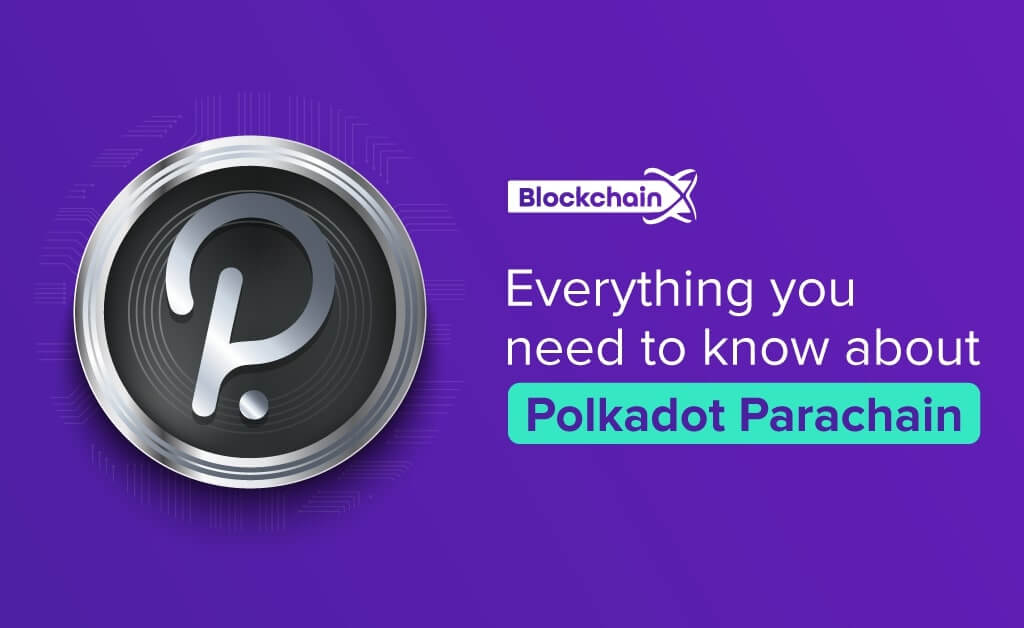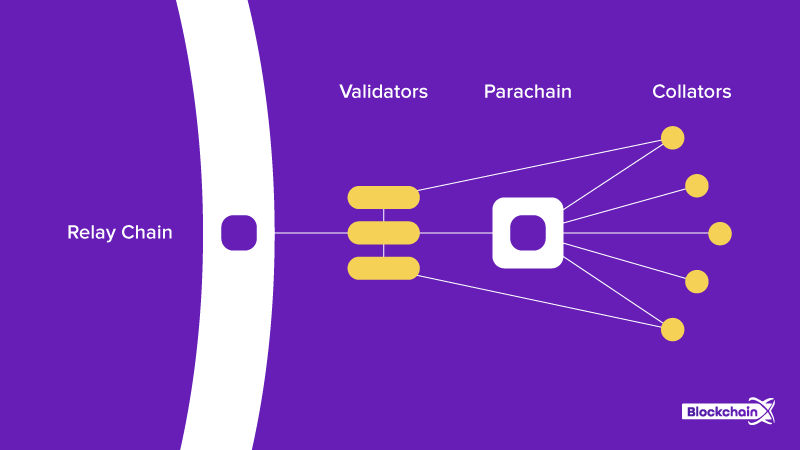
Everything you need to know about Polkadot Parachain
Starting with Bitcoin, the crypto world is now blooming with blockchain networks such as Ethereum, Corda, Cardano, Tron, Hyper-Ledger, Polkadot, etc. Among these, the Polkadot is everyone's favorite as like its name.
The thing that comes to mind when we hear the name Polkadot is its high-interoperability feature. Polkadot enables seamless interoperability with other blockchains.
In short, Polkadot is a blockchain platform and a cryptocurrency. If we point out its structure, the Polkadot provides a core network, the relay chain, and parallel blockchains called parachains.
Here is where the term parachain strikes. These Parachains are an integral part of the Polkadot ecosystem. If you can recall, Polkadot is an interoperable blockchain that can connect multiple blockchains, enabling them to communicate with each other.
Parachains are heterogeneous blockchains connected to Polkadot. They are interoperable with the Polkadot network and other parachains. Let's dive into the parachain network and explore it in detail.
What is Polkadots Parachain?
In simple terms, Parachains are custom, project-specific blockchains integrated within the Polkadot and Kusama networks. The parachain is derived from the word parallel chain, because the parachain always runs parallel to the Polkadot relay chain.
Parachains can customize any number of use cases and feed into the relay blockchain, the so-called heart of the blockchain. So what is a relay chain? The relay blockchain is responsible for and manages the shared security, consensus, and cross-chain interoperability of the Polkadot network. Parachains integrated into the relay chain benefit from the basic features of the relay chain. So, if we consider the relay chain as a center, many chains running in parallel to the center are called parachains.
Collators & Validators
A Polkadot network has four main parts, one of which is the collators. Collators maintain parachains by collecting parachain transactions from users and presenting state transition proofs to relay chain validators.
On the other hand, validators secure the relay chain by validating collator proofs, staking dots, and participating in consensus. These validators are also one of those four and inclusion in the shared state of Polkadot.
Here we wrap up parachains in short, parachains share the cross-chain composability and interoperability of Polkadot. Because of this, they can send or receive any type of data or asset with other parachains. That way, parachains can support new use cases and applications. Additionally, they share and benefit from Polkadot's security, scalability, and governance.
Let’s together dive into detail on the benefits of Polkadot parachains.
The Core Benefits of Parachains
We always start with interoperability, but it doesn't end there and there are many more benefits of parachain.
High-level of Interoperability
When we talk about parachains, Polkadot comes to the front of our minds, and so does interoperability when we say Polkadot. Here too it does not change because it says its most important feature is interoperability.
The parachains are layer-1 blockchains that can provide full support and dominance to blockchain communities and allow them for free transactions with other Parachains and external networks. The parachains inherently acquire Polkadot’s cross-chain composability, which provides any type of data transaction including tokens, verifiable credentials, off-chain information from oracles, and smart contract calls.
Highly Scalable
When do we say a blockchain is scalable? It is when they interact with each other. So that's where interoperability comes in, doesn't knowing that parachains can interoperate mean that they are also highly scalable?
Parachains have a more decentralized and efficient way to achieve blockchain scalability and throughput, as their transactions can be propagated and processed in parallel across an ecosystem of specialized layer-1 blockchains.
More Flexible
Polkadot has given optimum flexibility to parachains. The only must followed rule levied by Polkadot is that all the Parachain must prove to the Polkadot validators that each of its blocks has followed the agreed-upon protocol. In simple terms, Parachain must follow the consensus mechanism of the relay chain.
Each parachain can be designed in its own individualistic way. That's why they can run on any type of network, be it private or public. Flexibility is behind it all, and they have their own native token and governance process.
Governance Process
The governance process of Parachains is something to highlight, giving their community the ability to create their own governance features and processes to implement the best system. It can also take advantage of Polkadot's built-in transparency if its community finds it appropriate and exciting.
Governance provides the means to internalize the value of the parachain slot and distribute it across all members of the network. Permission to the sophisticated on-chain governance mechanisms reduces the hard forks of the parachain. In addition, on-chain governance also provides accountability and transparency to parachain communities.
The Applications of Parachains
Potential use cases for Parachain through interoperability, design flexibility, and scalability. This creates the concept of a Polkadot network with parachain as layer-1 blockchain. Let's explore some areas where businesses or industries that forward to running their projects on parachains are:
1. Internet of Things (IoT)
2. Smart Contracts
3. Digital Wallets
4. Credentials
5. Decentralized Finance (DeFi)
6. Identity Verifications
7. Oracles
How Parachain Work on a Polkadot Network?

If we decide to develop a project on Parachain, the first thing to do is run Parachain on the Polkadot network. For that, the foremost requirement is to lease a slot in the relay chain. Lease slots are offered through the parachain slot auction, where interested parties are required to bid for slots using Polkadot's native token: DOT. A minimum of six months to a maximum of two years for the respective team.
To participate in a parachain slot auction, interested parties are required to lock in the bid DOT amount for their chosen lease period. By doing so, after the expiry of the lease, the entire DOT amount will be unlocked. However, during the lease period, even if the DOT amount is reserved in the original account of the bidder, it cannot be used for stacking, transfer, or any other use.
Are you interested? Then there are several ways to fund your bids. You can self-fund or seek crowd loans, where DOT holders make contributions in exchange for certain rewards.
How much does it cost to run a parachain?
All we need to run a parachain on the Polkadot network is to lease a slot. If you ask how much it will cost, the answer is nothing. Because the full amount of DOT locked for a Parachain slot is unlocked at the end of the lease period.
It also means that Parachain can access as much computing power as it needs without incurring additional fees or "gas" costs. But during the lease period, the DOT remains locked and cannot be used for any purpose, so the cost of running a parachain can best be described as an opportunity cost.
Parachain In a Nutshell
Parachains are custom, project-specific blockchains that are integrated within the Polkadot network. parachains share the cross-chain composability and interoperability of Polkadot. Because of this, they can send or receive any type of data or asset with other parachains. That way, parachains can support new use cases and applications. Additionally, they share and benefit from Polkadot's security, scalability, and governance.





